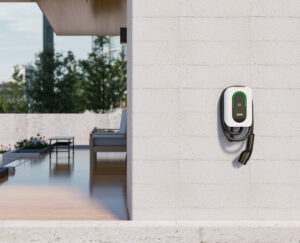
Vehicle-to-Grid (V2G): The Future of EV Charging and a Smarter Energy Grid
Vehicle-to-Grid technology is redefining the role of electric vehicles, turning them into dynamic energy assets that benefit drivers, utilities, and the planet.

The idea of EV Charging Storage Electricity is neither new nor utopian. Some countries are already using electric vehicles to store electricity – quite the contrary. Some countries are already using electric vehicles to store electricity
First, let’s clarify how bi-directional charging works. To understand the process, it’s important to know that electric cars run on DC power – the batteries are designed for that. But AC power comes out of an outlet, so AC power must first be converted to DC power. If this is done by an inverter, for example, the electrical energy is stored in the car’s battery.
In order to act as a storage device, electric vehicles must be equipped with batteries that can be charged in both directions. These batteries can not only absorb electrical energy, but also release it again. Therefore, the current can flow in both directions, from the charging source to the battery or from the battery back to the grid or the house. This is exactly what happens with bi-directional charging. This requires cables that can quickly transmit large amounts of power.
Like Tesla, the Japanese use the so-called CHAdeMO connection, which can achieve charging capacities of more than 50 kW. Therefore, charging stations must be equipped with DC chargers. In short: In addition to electric vehicles, all other components, such as wall boxes, charging cables and plugs, must support smart grid technology.
In Japan, Mitsubishi electric vehicles have been successful in providing electricity for washing machines, dryers and refrigerators in homes. Mitsubishi is working to further improve the system. For example, the external battery should act as an additional small charging unit between the EV battery and the home power connection. In addition, the remaining power of the EV should be precisely controlled, as well as the amount of power that can be used for the home.
If you have your own photovoltaic system, the electric vehicle is particularly interesting as a power storage device. The days of large subsidies are more or less behind us, and electricity from the grid is expensive.
Specifically, green power from the grid costs almost three times as much as the electricity you get. The end of the price spiral is still a long way off. So it makes sense not to feed electricity into the public grid in the first place, but to consume or store it yourself and then use it in turn.
Therefore, if you are planning to buy an electric car, it is especially worthwhile to include smart grid technology in your considerations from the start. In the long run, this technology should prove to be profitable. This is especially true when there is an option to integrate additional power storage units into the vehicle-to-home grid. Mitsubishi is already planning to offer the corresponding system in Germany in the futur

Of course, you don’t have to buy an electric vehicle to store the electricity you generate. You can get a wide range of power storage devices for your PV system on the market.
Even if prices have dropped significantly, the storage solutions offered still do not fall into the cheap category. However, since the likelihood of electricity prices falling in the next few years is extremely low, a purchase is at least worth considering. Especially since you can relatively easily calculate when your investment will pay for itself and you will make a significant profit.
Electric vehicles with bi-directional rechargeable batteries also offer many advantages on the road. For example, electric vehicles can provide each other with roadside assistance. If two batteries can be connected using a CHAdeMO cable, an empty battery can be charged so that a stranded electric car can reach the next charging station.
German startup Sono Motors has also equipped its Sion with a bi-directional rechargeable battery. The model should then be able to feed energy back into the house or grid at up to 11 kW. Unfortunately, even small electric sports cars with their own solar cells are still not available, except for the battery power storage option.
If you go camping, you’re lucky to be able to provide yourself with electricity. If the electric car also has its own solar cell, like the Sion, you can get electricity for free, at least in the summer. Camping is really fun out there.
By the way, once the legal requirements are met, not only can you choose to use the stored electricity yourself, for example in your own house (V2H). Temporarily stored electricity can also be fed into the public grid. Thus, the vehicle-to-grid (V2G) variant opens up many attractive options and can also significantly stabilize the public grid.

(Source:https:jointcharging.com)
Nissan is considered a pioneer when it comes to bi-directional charging. The Nissan LEAF has been using this charging technology for several years. In general, the models from Asian manufacturers are much more advanced in terms of technology, as the CHAdeMO connector was designed for this purpose from the beginning. As a result, it has become more common in Asia. This type of connection is also the only one that has a valid protocol for supplying power to the public grid. In Europe, the CCS connection is the most common, but it usually does not yet support V2G. Development here is ongoing.
The following electric vehicle models are currently capable of bi-directional charging.
However, in Germany, they do not want to simply leave the field to the Asians. In addition to Sono Motors, Volkswagen is also bringing this technology to market. The VW ID.3, ID.4 and ID.5 with 77 kWh batteries are already technically equipped for this purpose, but the infrastructure is still missing. Buzz also has this new technology at its disposal.
As part of the “Bi-directional charge management – BDL” research project, field testing of 50 BMW i3s converted to V2G has begun.
Nissan, Bosch and the Fraunhofer Society are also conducting field tests at various locations. i-rEzEPT is designed to reveal potential and problems through tests at company headquarters, commercial warehouses and single-family homes.
Porsche is also testing possible areas of application for its electric models. Hyundai has also modified some of the Ioniq 5’s software and wants to gain experience in the V2H

Vehicle-to-Grid technology is redefining the role of electric vehicles, turning them into dynamic energy assets that benefit drivers, utilities, and the planet.

At this ACT Expo, Joint Tech will unveil its latest advanced commercial Level 2 charging solution, designed to enhance the user experience. Meanwhile,powered by new technology, our commercial chargers effectively address multiple challenges encountered in real-world applications.

The new tariffs imposed by the United States have once again caused global economic tension.In order to respond to the impact on the global supply chain, Joint new factory in Malaysia offers favorable tax rates.